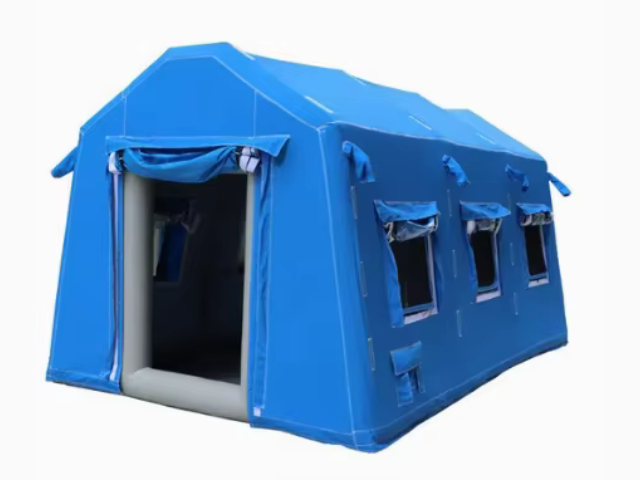Advanced Tarpaulin Bungees Maintenance Strategies
To be honest, tarpaulin bungees don’t create any issues until it is too late to address them. Whether it is to secure tarps on a delivery truck, hold down covers for farm equipment, or protect outdoor gear, these bungees do the heavy lifting. But remember that even the toughest tarpaulin bungees from a great provider like Dammei will not be on the job forever. Neglecting maintenance can lead to bungees snapping while in use, causing cargo to become unsafe or tarps to fly off. But there is good news. With a few maintenance strategies for tarpaulin bungees, you can get those last minute job panics under control and keep the bungees working. Let us go over the bungees maintenance tips.

Regular Inspections Catch Small Issues Before They Turn Big
The first rule of tarpaulin bungees maintenance is check them. Inspections will help identify tiny issues such as fraying or weakening of the cord and avoid bigger, costlier issues. But what problems will you be looking for? Let’s start with the cord itself.
Feel the entire length of the bungee. Do you notice any rough spots, thin areas, or nicks? These are signs of wear, and those are the areas where the cord is most likely to snap first. If you bungee a truck that often carries gravel or sharp tools, the cord will rub against rough surfaces and develop small cuts. Even a minor cut weakens the entire cord, so pay attention to those. If your bungee straps have hooks, check those as well. Are the hooks rusty, bent, or loose? Sticky rusty hooks will cause problems and a bent hooks will not hold the tarp or anchor down properly. Dammei’s tarpaulin bungees commonly have rust resistant hooks, but those hooks still require attention as well. The salt from road spray or fertilizer from farm use can cause buildup rust if left unchecked.
Check to see if the bungee has lost some of its elasticity. Hold one end of the bungee and stretch it. Notice how quickly it bounces back to its original position. If it does not return quickly, the bungee's insides may be degrading. This can occur from overstretching and extreme heat. For example, if tarpaulin bungee bungees are left for long periods on a tractor cover in the summer sun, the bungee bungee can become dry. Check your tarpaulin bungees with a quick 30-second check to avoid dry bungee syndrome. Look for and identify the issues and use a quick fix like a piece of tape to mark the bungee to remember to fix it. This can save you a headache.
Avoid Damage: Moisture and Dirt Maintenance
Tarpaulin bungees will get dirty at some point. If you use them at construction sites, they may get mud on them; if you use them at truck beds, they get oil; on farms they get fertilizer, and near ocean, they get salt. Letting the grime sit is not only disgusting, but it can also damage the cord and hooks. Dirt can wear the bungee's outer layer and moisture (which is trapped under the dirt) can cause the elastic to mildew, and hooks rust at an accelerated rate. Frequent cleaning and drying is the answer.
Washing your tarpaulin bungees is easy. Take a bucket of warm water, pour in a little mild dish soap, and steer clear of harsh chemicals like bleach and degreasers, as they will damage the bungee. Grab a soft bristled brush, like an old toothbrush, or a small scrub brush and gently scrub the cord and hooks using mild soap. For tougher spots, such as oil that has dried, let soapy water soak on the cord for a minute and then scrub, but gently, so you do not scratch the cord. If the hooks are rusty, even Dammei’s rust-resistant ones, you can remove buildup by soft cloth and diluted white vinegar (remember to rinse it off afterward).
What’s the most critical step? Before storing the bungees, ensure they’re fully dried. Hang them in a dry, airy location like a garage or shed to dry—do not pile them wet in a bag or bin. You can hang them outside in the shade, too, when the weather’s nice! It’s better to hang them in the shade, since direct sunlight can dry the elastic too much, which can damage the bungees. For the hooks, use a dry cloth to wipe off any excess moisture to prevent rusting. If you used bungees to secure a tarp over a pile of firewood that got rained on, for instance, take the tarp off first, then clean, dry, and store the bungees. If you skip that moisture, it will certainly encourage the elastic cord to become unusable quickly.
Smart Storage: Keep Your Bungees Safe When Not in Use
Even the best t arpaulin bungees will degrade quickly if stored improperly. Simply leaving bungees in the sun for long periods, cramped in a damp toolbox, or tangled with sharp tools will kill bungees in no time. When storing bungees, you are trying to defend them against the three most harmful elements: sun, moisture, and physical damage. How do you do that?
To start, pick a cool and dry place to keep them. Closed cabinet in the garage, a dry plastic bin with a lid, and even a canvas bag hung on a hook will do. Just make sure it will not let in moisture. Avoid storing near heaters, vents, or windows, as extreme heat will dry out the elastic. Sunlight's UV rays will also break down the cord and kill the bungee. Dammei’s tarpaulin bungees are made with UV-resistant materials, but even that can only withstand so much direct sun. If you must store bungees outside (like in a shed), keep them in a sealed bin and place it away from any leaks.
Second, do not overstretch or twist them during storage. Hanging bungees by their hooks and leaving them stretched causes constant tension, which makes them lose their elasticity and bounce. For storage, lay them flat or coil them loosely (not too tight). If you have several bungees, keep them apart. Tangled bungees lose fray because they rub against each other. You can use zip ties (loosely!) to keep each coiled bungee together, or use dividers to keep them separate in a bin.
Third, keep them away from sharp edges. Storing bungees next to screwdrivers, pliers, or nails is a bad idea—one wrong move and a sharp edge can slice the cord. Even something like a rusty nail in a toolbox can catch on the bungee and create a small cut. If you use a toolbox to store them, put the bungees in a separate pouch or wrap them in a soft cloth first. For example, if you’re a truck driver who keeps bungees in your cab toolbox, use a small fabric bag to hold them—this keeps them safe from the other tools and prevents them from getting tangled.
Timely Repair and Replacement: Knowing When to Fix and When to Let Go
As carefully as you might maintain your tarpaulin bungees, there will come a time when they will need to be repaired or replaced. What’s important is being able to identify whether a problem is repairable or if it’s time to get a new bungee. Using a severed bungee is dangerous as it can break while you are securing a tarp on a moving truck and cause an accident. So, let’s get into when to repair, and when to replace.
To start, we can address some simple fixes. For bungees with small frays(note, not empty cuts)on wraps, use marine grade tape or heavy duty duct tape. Just make sure it’s clean and dry. Then, cover with tape and wrap it tightly to the fray. For hooks that are bent/hooks and not broken, they shouldbe able to properly rust with the cover. Replace and discard hte broken hooks with the bungees described. Then, they are able to rust properly to the hooks. Just replaceit with old bungees or purchase new ones. For stubborn hooks, the cord is still good to use and with the hook described. For bungees that have topped or less as stubby hooks that are rusted, they should be able to hook to new bungees made with the hooks described. Replacing will save bungees from the rusted hooks.
Now, when should you replace bungee cords, hooks, or tarpaulins? If the bungee cord has a deep cut, has visible elastic cord, is really frayed, or has lost most of its elasticity where the bungee cord does not bounce back at all, then get rid of it. Hooks that are broken, rusted, loose, or wiggly on the cord, need replacement as well. If you are using a bungee that snapped halfway, just throw it away. Do not attempt to tie it back to use it. A tied bungee will not retain its strength and will break again shortly. When replacing a bungee, you need to ensure that the size and strength are appropriate. Dammei offers a range of values for tarpaulin bungees and for varying weight capacities. Using a light-duty bungee on a heavy tarp will lead to more frequent replacements. Always keep several bungees so you are not forced to use a damaged bungee in a pinch.

